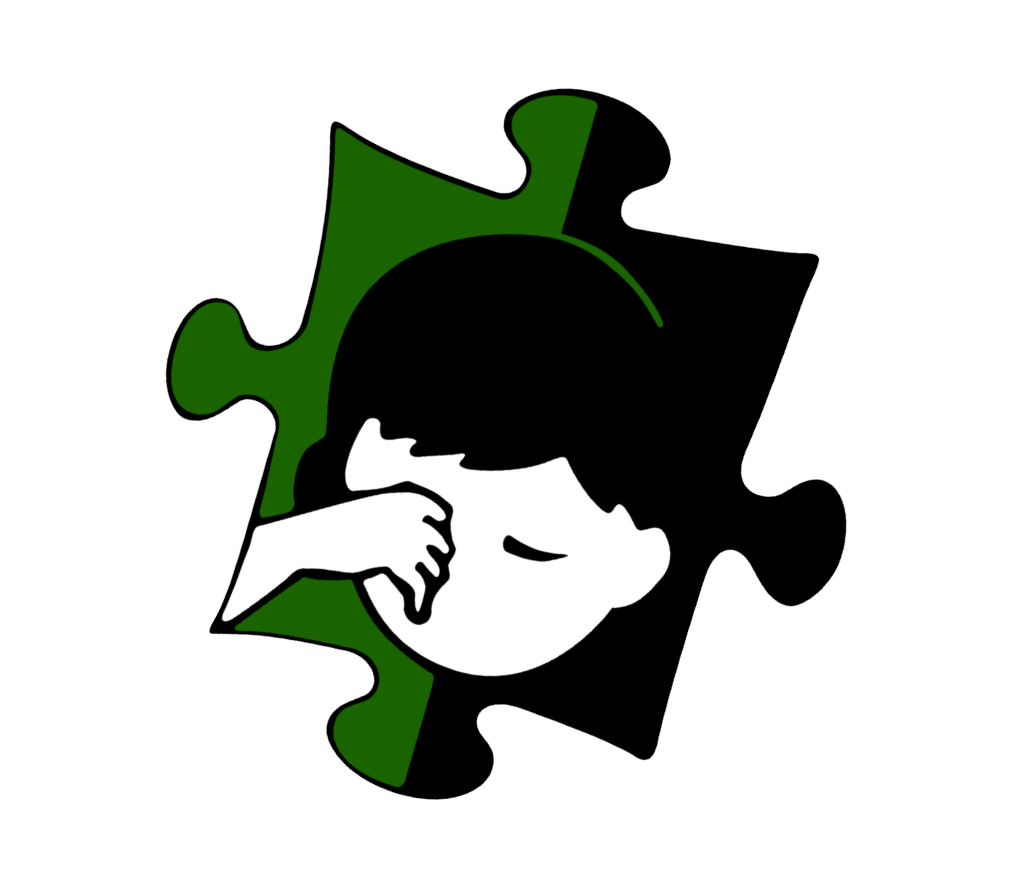The autism puzzle as a symbol for ASD
And why it’s a no from me
By Camilla Asra Engelby

I often come by the misconception that the autism puzzle piece originates from the American organisation Autism Speaks.
And while Autism Speaks is indeed reviled by most of the autistic community for their historic ableism – such as their views of autism as a disease, spreading of misleading information and eugenics research. In this case the organisation has merely appropriated an already existing symbol. However, the true origins of the autism puzzle piece is – from my autistic perspective – just as terrible.
The autism puzzle piece was designed in 1963 in the UK – by Gerald Gasson a member of the Executive Committee of the British autism organisation the National Autistic Society (then named the Society for Autistic Children) as the first logo of the organisation. Glasson was also a parent of an autistic child.
The tragic autistic child trapped in the puzzle
This version of the autism puzzle had a crying child trapped inside the puzzle piece, symbolising the tragically suffering and unreachable autistic child (at the time autism was regarded as mainly a childhood condition). Though what puzzles me (pun intended) is what they surmised happened when these autistic children up? Since autism is in fact a life-long disability.


The puzzle piece is so effective because it tells us something about autism: our children are handicapped by a puzzling condition; this isolates them from normal human contact and therefore they do not not ‘fit in’. The suggestion of a weeping child is a reminder that autistic people do indeed suffer from their handicap.
– Helen Green Allison, co-founder of the National Autistic Society in the UK, on the design of the puzzle piece with the crying child.
What bothers me the most about this particular quote is the word normal. As if we autistics are not normal. I’m a perfectly normal autistic person, thank you. No need to other us in such a cruel way.
But the assumption that we do not ‘fit in’ also really hurts. The overarching mentality is that we’re the only ones who must adapt and change to make this world that we all co-habitat bearable for the ‘normal’ allistic (non-autistic) people around us.
I however will absolutely agree that I do suffer from my disability in various ways. For example when a last minute change of plans triggers a meltdown. Or when I’m experiencing sensory overload (which can also lead to a meltdown). But my main cause of suffering (as a low-support needs autistic person) is caused by lack of inclusion and accommodation. And then we’re back at othering.
The autism puzzle today
To my knowledge very few autism organisation today uses a version with the crying child (though the National Autism Society of Malaysia (NASOM) actually uses Gassons artwork in their logo).
Yet plenty still use the puzzle piece in their logos and campaigns framing autistics as tragically lost and mysteries to be solved. Or in other words, as a negative.

So, what’s wrong with the autism puzzle?
The puzzle piece represents – yet another example – of autistics being talked over, misunderstood and misrepresented by (for the most part well-meaning) people with no autistic lived experience. And as with any other disability, when it comes to autism we – actually autistic people – should be at the forefront in regards to how we wish to be talked about and represented.
And the puzzle piece symbolising how we’re inherently tragically broken and in need of fixing is not our narrative. It’s not how see ourselves. At least not exclusively.
What to use instead?
Many autistics instead advocate for using the rainbow or gold infinity symbol. The rainbow infinity symbol as an alternative to the autism puzzle dates back to 2005 when the first Autistic Pride Day was celebrated. The (now annual) event was organised for Aspies For Freedom (AFF) a group made up of autistic people.

- The infinity symbol symbolises the infinite ways one can be autistic.
- The rainbow symbolises the range of the spectrum.
- The gold symbolises value. Incidentally the chemical symbol for gold also happens to be Au.
We’re being heard and seen
After listening to the autistic community the National Autistic Society (and thankfully several other autism organisations) has ceased using the puzzle piece to represent autism.

Privacy statement | Cookie policy | Disclaimer | Imprint | Copyright Camilla Asra Engelby